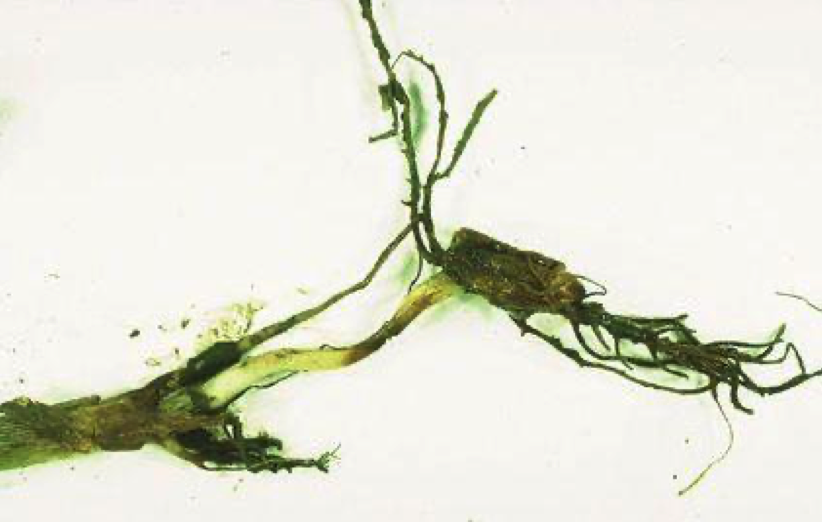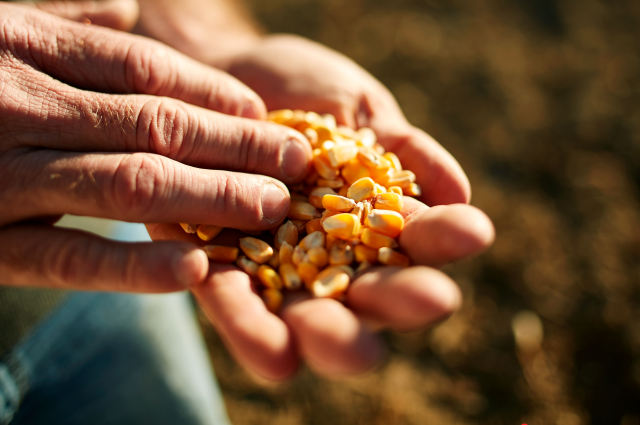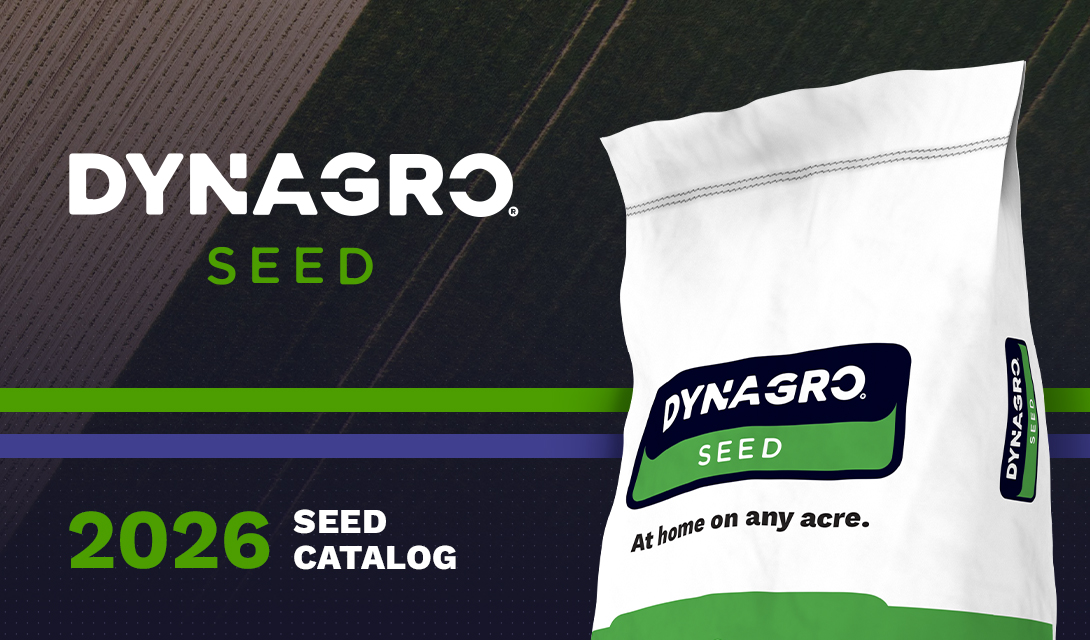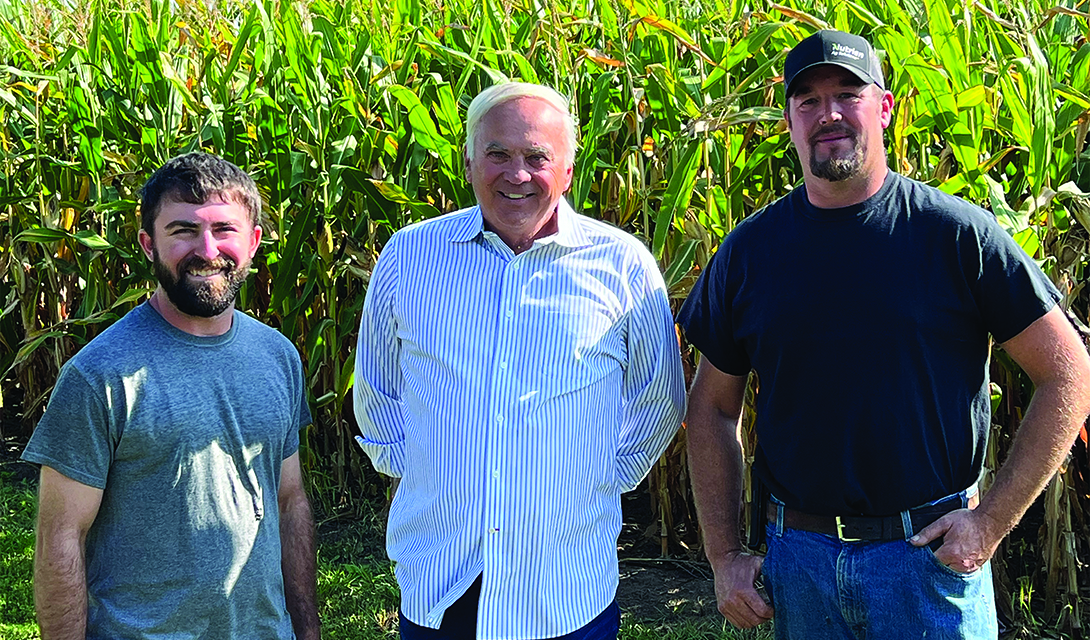Common Early Season Ailments of Corn
Cool Temperatures and Wet Soils.
Cool and wet conditions can be described as temperatures below 50 degrees F and soils unfit for field work. Plant growth is slowed dramatically under these conditions. Unemerged corn is at risk due to the possibility of seed reserves being used up before emergence. Corn seed reserves are generally good for 21-28 days. Emerged corn is at low risk because primary roots and initial leaves are developed.
Frost and Freezing Temperatures.
Let’s consider air temperatures below 28 degrees F. Emerged corn with 6+ leaves are at the greatest risk because the growing point is near or above the soil surface and is easily damaged or killed. Corn that is emerged, but with less than 6 leaves will probably lose leaves (leaves will turn black and look wilted). New growth may have difficulty in growing through this damaged leaf tissue; however, the growing point is still below the soil surface and is insulated from the cold temperatures. Unemerged corn is not at risk also due to the insulation effect of the soil.
Seedling Diseases.
Seed rot and seedling blight (damping off) of corn are caused by a variety of fungi that are seedborne or soilborne. The most common genera are Fusarium and Pythium. During normal germination temperatures, these fungal diseases are not a major problem because the corn seedling becomes established very quickly; and essentially, grows out of danger. Wet soils are particularly favorable for Pythium, because this fungus produces swimming spores. Pythium can rot the seed prior to germination, or attack the young seedling soon after emergence, resulting in dark, slimy lesions on the root or mesocotyl. Fusarium infection results in tan to reddish brown lesions that cause the roots and mesocotyl to shrivel. A general darkening and reduced young root system is common with both Pythium and Fusarium infection (see photo).
Other fungi that are common seedling pathogens are Rhizoctonia, Penecillium, Diplodia, and Colletotrichum.
It is not vital to determine what specific fungus is responsible for seed rot and/or seedling blight because management options are essentially the same for each seedling disease. However, it is important to determine if your problem is due to disease or another cause, for example, herbicide injury or insect damage. Always look for evidence of insect feeding or abnormal plant development, which indicates herbicide damage. Seedling diseases prevail when soil conditions are cool and wet, and emergence is delayed. Other clues that imply seedling disease include patches of poor stands especially in low or poorly drained areas of the field or healthy seedlings interspersed with dead seedlings. Neither of these patterns would be expected from herbicide injury.

To reduce the prevalence of corn seedling diseases, use high quality, fungicide-treated seed, and plant when soil temperatures are above 50° F and soil moisture is adequate but not excessive. This year most corn seed has been treated with a combination of two or more fungicides. Some fungicides work by attacking a specific class of pathogen; for example, seed treatments containing mefenoxam or metalaxyl are most effective against Pythium, while those containing fludioxinil adequately control Fusarium and Rhizoctonia. Other fungicides are broader spectrum, for example, the active ingredient azoxystrobin is effective against Fusarium, Penecillium, Pythium, and Rhizoctonia. Regardless of the active ingredient(s), seed treatments usually are most effective for only two to three weeks after planting.
Leafing Out Underground.
Poor seedbeds, crusty soils, or incorrectly applied fertilizer and pesticides can lead to corn leafing out underground. At this point, the corn seedling is trying to establish leaves above the soil surface to start the photosynthesis process for food. However, plants that leaf out underground will usually die, and subsequent stands are affected.
Soil Crusting.
Medium to heavy soils with higher levels of clay are most susceptible to this problem. Combine the clay-type soil with a ‘hard driving’ rain and the result is a packed soil surface. As the soil then dries, a crust forms and the seedling cannot emerge from the soil. Rain to soften the soil or rotary hoeing are corrective actions.
Yellow Color.
Cool wet soil conditions will enhance yellow coloration in the leaves. At this point, there is not enough sunlight and/or heat units for the plant to actively grow and produce energy. 2-3 sunny days will change the plants back to a normal green color. If the plants are still yellow, be sure that nitrogen deficiency is not the problem; either through low initial application rate or possibly denitrification if significantly, wet conditions have existed. Sidedressing nitrogen can be used to alleviate the nitrogen deficiency.
Purple Color.
The purple color may result from the expression genes for anthocyanin pigment formation. Corn hybrids may contain any number of these genes. The purpling only occurs in the outer layer of cells and does not affect the chlorophyll content of the leaves. Exposure to night air temperatures in the 40’s and day temperatures in the 60’s causes purpling. The degree of purpling depends on the hybrid. Some hybrids will exhibit no purple color while other hybrids can be very dark purple in color. Purple corn caused by the weather will have no effect on grain yield, and the pigmentation will slowly disappear as temperatures return to normal.
Another reason - typically brought on by cool wet soil - is phosphorous deficiency because the root system is not established enough to absorb enough nutrients to sustain the active growth requirements of the young corn seedling. A starter fertilizer is a preventative measure. Most plants will grow out of the problem by the 5-leaf stage when the soil has warmed up and active root growth has taken place which increases the amount of nutrient uptake which should support the growth needs of the plant.
Uneven Emergence.
Uneven emergence in corn will result in yield reductions. The yield reductions are due to the competitiveness of plants at different growth stages. Generally, it is not worth replanting because yield reductions due to uneven emergence are generally less than yield reductions due to late replantings.
Wind or Sand Blasting.
Sand and soil particles will cause abrasions on stalks and leaves. Leaf tips and edges turn white then brown. Purple leaves may be seen above midrib breakpoints. Damage before 5 leaves will allow the plant to recover since the growing point is below the soil surface. In extreme cases stand reduction will result.
This information may have been accumulated from publicly available sources outside of Dyna-Gro Seed, or its affiliates. Individual results may vary, and performance may vary from location to location and from year to year. This result may not be an indicator of results you may obtain as local growing, soil and weather conditions may vary. Dyna-Gro® is a registered trademark of Loveland Products, Inc. Featured logos are service/trademarks of their respective owners.




